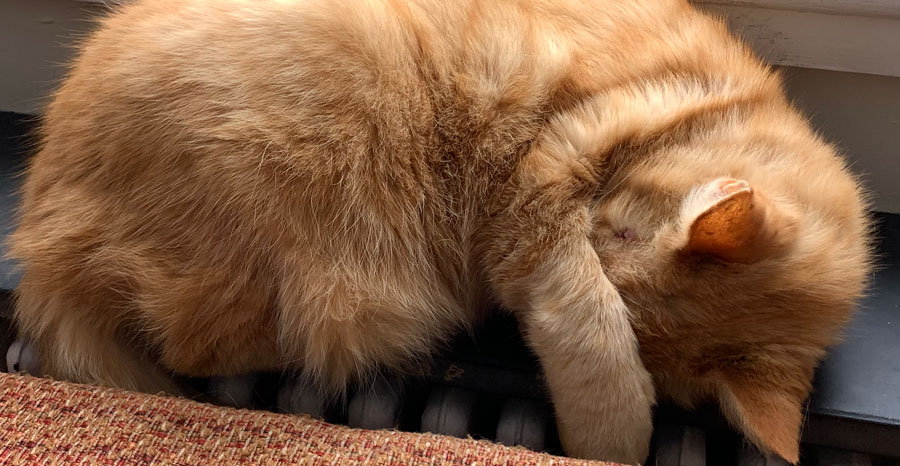Anyone who reads writing blogs (or listens to writing podcasts, or just talks to a random fellow writer) has undoubtedly given thought to the pandemic’s effect on creativity. A year ago, I predicted that “all this free time for writing” would allow me to make steady progress on my next novel. (What can I say; I’m an optimist.) My 2020 hindsight reveals—as usual—a more complicated reality.

It’s not exactly a mathematical equation, but compared to a “normal” year (one that includes travel and racing), I estimate that a lower production of words that will eventually carry forward to the final draft. Turns out, I write best when living my best life—and that has just not been possible for the past year. A change of scenery sparks my brain in ways the same four walls (nice as they are) can never do. And not-thinking about writing (for me, best achieved by the combined mind and body challenges of sailboat racing) is often the best spark for the alchemy required to build worlds and get to know characters.
Creativity is shy; It only comes out to play when It feels safe. Worries of any sort (money, infection, grocery shopping) keep It hiding under the bed, head hidden beneath a paw. Some mornings I can coax It out by just showing up and putting my ass in the chair. But on too many mornings this past year, no matter how many tempting treats I set out for It, Creativity didn’t even bother to open one eye.
(Maybe I should’ve joined It under the bed, rather than trying to write through all that uncertainty and despair.)
Despite that ongoing challenge, though, the year was definitely not a waste. Last September, I got to channel my annual back-to-school energy into a virtual 12 week course on Novel Planning. That forced me to think about my story in a new way, added several new tricks to my writer’s toolbox, and—by providing a peek into the minds of ten other authors—made me appreciate the uniqueness of a story only I can write. So the pandemic brought me fresh and unexpected gifts of both education and community, even as it scared Creativity deeper into Its safe space.
Hopefully, thanks to science and government, it will soon be possible to live our best lives again. Already, spring has inspired Creativity to emerge (yawning, rubbing paws into sleepy eyes; “now, where were we again?”) on most of my ass-in-chair mornings. Perhaps, looking back a year from now, I’ll tell you that the pause of 2020 led to a 2021 burst of productivity, balancing out—or even pushing positive—the productivity equation.
More likely, this year’s reality will be a little more complicated, too.
How has the past year of uncertainty affected your brain space? Share a thought in the comments below, or send me an email. I read every single thought, and I really enjoy our conversations.
Your blog this morning aligns with the column I finished yesterday for Soundings Trade Only tentatively titled Create the Frame. The underlying notion, which came from my leadership coaching training, is that establishing constraints fosters creativity, innovation and productivity because of the focus and commitment to specific output that it generates. One of the key constraints is a deadline, as in, “this needs to be done before I pack up the boat and drive it to Miami.” But there’s more to the idea than that (check out this source that inspired me: https://hbr.org/2019/11/why-constraints-are-good-for-innovation). Personally, during this pandemic, I found that having full days and long evenings available to get things did not guarantee record-setting production. But when I’ve focused and set boundaries or a frame around a task, great stuff happened.
John, thanks for the note and the HBR link. Agreed, but this is my favorite quote: “If the space within which creative ideas are generated becomes too narrow, it is harder to form novel connections and serendipitous insights – both of which are vital for creativity. Hence, the key for fostering creativity and innovation in your organization is to strike a balance by orchestrating different types of constraints.”
As you know, I don’t consciously need a deadline to get things done—but those departure dates to regattas (and elsewhere) definitely sharpen the list of priorities. Storytelling remains at the top for sure!
Assuming one has the fortune to not be in a critical life situation – and possibly even in that case for the right person – I think times of stress/crisis/change, whatever you want to label it, can be times of great creativity. What I have found in the last 12+ months is this situation provided a lot of room to be creative about many parts of my life and it has been in many ways quite interesting. I am reminded of the “Parable of a Chinese farmer” (there are many version of this, but here is one: https://www.cleveland.com/living/2009/02/parable_of_a_chinese_farmer_ho.html) where the take home message is you can’t control events, but you can control how you react to them. Of course I am saying all of this from a privileged fiscally stable position, so I certainly understand this response may not apply to everyone.
Alex, thanks for the reminder of that fable. I agree that (for those of us lucky enough to be worried about things like creativity/loss, rather than basic survival) stress/crisis can be catalysts. But instability/uncertainty tends to upset habits we liked as well as those we are happy to lose. It’s impossible for me to separate out where I’d be in the long writing process that takes me to a finished novel if 2020 had been “normal,” and it’s a totally moot point anyway. But quite interesting to see where our realignment of priorities has taken us both!